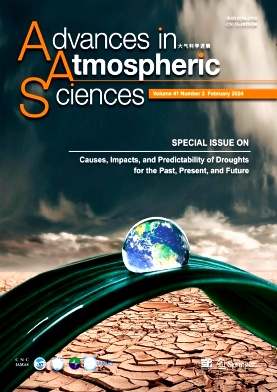| 投稿方式:官网投稿 |
- 栏目频次
- 单位占比
-
热词

中频栏目
低频栏目
-
更多
期刊简介
- 《大气科学进展》(英文版)(AdvancesinAtmosphericSciences)(月刊),创刊于1984年,由中国科学院大气物理研究所、中国气象学会主办。本刊现为国家自然科学基金委员会重点资助期刊,是大气科学领域的学术性刊物,坚持“百花齐放,百家争鸣”的方针,努力反映大气科学领域的最新研究成果,及时刊登有创造性的学术论文及评述性文章,报道大气科学领域内的新动向、新问题。国内外大气科学领域著名科学家均向我刊投稿,编委由国内外大气科学领域知名科学家共40多人组成。
-
基本信息
- 期刊名称:大气科学进展(英文版)(Advances in Atmospheric Sciences )
- 主管单位:中国科学院
- 主办单位:中国科学院大气物理研究所、中国气象学会
- 国内刊号:CN 11-1925/O4
- 国际刊号:ISSN 0256-1530;EISSN1861-9533
-
- 出刊日期:
- 期刊定价:
-
- 邮发代码:
-
- 所在省区:北京
- 邮政编码:
- 联系地址:
-
投稿信息
-
- 学科分类:天文地球科学
- 版面费用:待核实
-
- 字数要求:14000-44000
- 查重要求:-
-
- 复合因子:2.285
- 综合因子:1.708
-
- 审 稿 费:待核实
- 稿费:待核实
- 本刊可发:
- 特殊属性:第一批认定学术期刊
-
联系方式
- 投稿网址:http://mc03.manuscriptcentral.com/aasiap
- 官网网址:http://www.iapjournals.ac.cn/aas/
- 电话传真:010-82995054(202402);010-82995055,82995471(官网电话)
- 电子邮箱:aas@mail.iap.ac.cn(202402期)
- 微信公众号:

